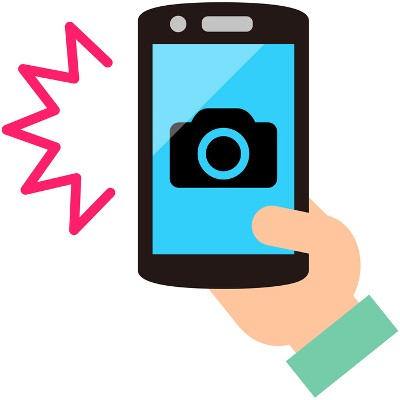JoomConnect Blog
Tips to Better Use Your Smartphone's Camera
We’ve spoken fairly frequently on the value of using visual content in your marketing efforts, but on the off-chance that you come across a marketing opportunity as you go about your day, are you really going to be lugging around the equipment to capture it? Probably not, but there is a good chance that you’ll have another invaluable tool: a smartphone.
Today, we’ll go over a few key points to using your smartphone to capture the best photo and video content that it can.
1. Hold it Steady
It’s no secret that the slightest jiggle can turn any image or scene being captured by a smartphone into an impressionist painting. While there is a time and a place for abstract art, your marketing isn’t it. Therefore, you need to make sure that you have the means to keep your smartphone still. There are a few ways you can go about this.
For a low-tech solution, minimize your body’s natural movement by finding something to brace your device and/or arms against. If you’ve ever seen a professional photographer leaning against a wall, that’s what they’re doing--steadying their shot. It’s an effective method when you’re in a pinch.
Alternatively, the boom in mobile photography enthusiasts has lead to the popularity of small, inexpensive, portable tripods made specifically for such devices. These tripods make capturing quality photos and videos much simpler by assisting you in stabilizing your shot.
It is also important to remember that the light conditions can impact the importance of how steady your shot is. On that note…
2. Lights + Camera = Important
It should come as no surprise that lighting is a crucial consideration to quality photographs and video. After all, you don’t just want your subject to be visible, you want it to look good. This means that you need to use your flash, any lighting components you have, as well as the light that nature provides, strategically.
Natural light tends to make things look good, so leverage it as much as you can if given the opportunity. If you aren’t given the opportunity, use your flash (or lighting components) to augment your shots, as you are then given more options.
For example, if most of the light is behind your subject, the flash can help balance the light on either side, giving you a clearer image. Alternatively, you can use your flash to draw attention to certain elements of your shot, bringing out extra details in some places at the expense of detail in others. Using flash in already well-lit places can help you capture these extra details.
When working with natural light, you still can control some features of your shot. Rather than moving lighting equipment, you have to reposition yourself around your subject. You want to have your subject in light conditions that are as even as you can manage.
Don’t be afraid to reposition yourself in order to get a better shot.
3. Structure Your Shot
One of the hallmarks of a professional video or photograph is its composition -- how the elements of the image play off each other, how they are balanced, and how they come together to form the shot.
The Rule of Thirds has been used by photographers and videographers to improve the composition of their shots. Your phone’s camera should have a setting that puts a grid over the display. Try to keep the most interesting elements of your images near the corners around the center box.
Exploring the settings allows you to adjust the camera to take different formats. From panoramic images to shots captured with a fisheye lens, different settings allow you to give your images a different feel, and by extension, a different message. Depending on your phone and the app you’re using, you may have different opportunities as to how you can alter and manipulate the image.
4. Finally, Don’t Feel Stuck with The Factory App
Keep in mind, there’s nothing that says you have to use the camera application that came preinstalled on your chosen device. There are plenty of Android applications out there that use the camera to capture pictures and videos.
It never hurts to explore a little and experiment to find a camera app that offers your preferred features, and editing apps that give that extra something to your image and video content. You may have to try a variety of different apps before you find one that you are truly comfortable with.
However, as you try out different apps, make sure that they all come from the official app store that came preinstalled on the device. This will help reduce the likelihood of inadvertently installing malware or some other threat along with the app.
With these tips in mind, you should be taking better pictures and filming better videos in no time. Of course, you may also want to consider investing in a camera devoted to marketing efforts.
For help leveraging your newly improved visual materials in your marketing, reach out to us!



